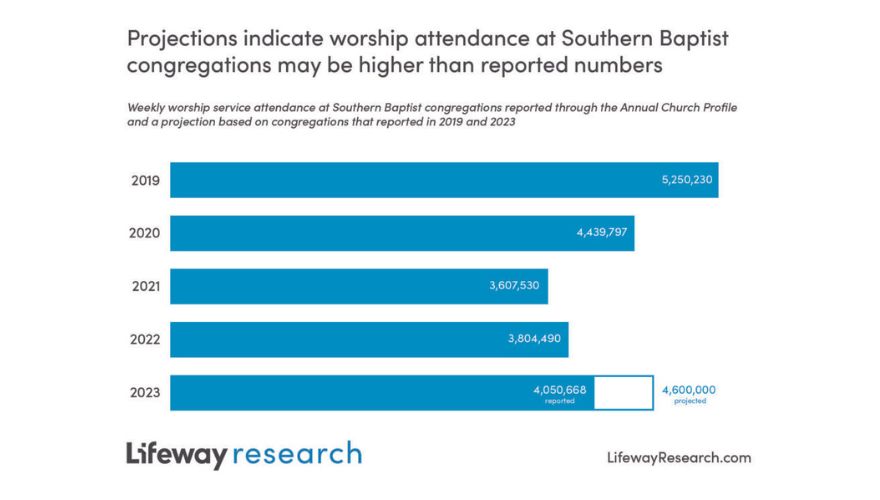NASHVILLE (BP) – Church planting has changed a lot in the last 20 years, but some things have remained constant and even grown in importance. Training, assessment and partnerships are crucial.
Pertaining to the latter, it’s become clearer that several hands are needed for a church to start and grow into maturity. Just when the church begins to grow, it becomes the hand that plants another congregation. This requires a kingdom mindset.
Don’t be afraid of making yourself smaller to make something else bigger.
“When most people talk about ‘growing the church’ in our culture, they think of individual churches growing larger,” said Vance Pitman, president of Send Network. “This includes the pastors and leaders of those individual churches.”
Pitman planted Hope Church in 2000 and served as pastor for 21 years before being named to his current role in December 2021.
“When we are invested in a spiritual community, it’s natural to want to see that community grow. We want our church to increase in attendance from 200 people to 300 and to 500.”
In and of itself, this isn’t bad, he stressed, as “all living, healthy things grow, and healthy churches should be growing.”
“But the core element of spiritual multiplication is not increasing the size of our congregations – it’s increasing the number of our congregations,” he said. “It’s churches planting churches that grow, develop and plant new churches – and on and on.”
A big part of the Great Commission Resurgence (GCR) Evaluation Task Force report released May 13 was a look at the state of church planting in the Southern Baptist Convention (SBC.) Following the adoption of the original GCR Task Force recommendations in 2010, North American Mission Board (NAMB) and SBC church planting underwent a major overhaul.
In light of the current task force’s report and subsequent recommendations, which will be presented to messengers at the SBC annual meeting next week, Baptist Press (BP) spoke with several NAMB and Send Network leaders about the challenges and opportunities facing the church planting movement.
Pitman and Hope Church were part of the April 3, 2015, launch of Send Network, built on the values of Kingdom, Brotherhood and Multiplication. Those have since been updated to:
- Seek first the kingdom. God is at work locally and globally.
- Deepen devotion. Without prayer and the Word, we are powerless.
- Stick together. We are a family united by a mission.
- Think multiplication. God’s global mission demands disciples and churches that multiply.
- Engage your city.
Tracking church planting history and future
Church planting has not gone unscathed by a pastor shortage. In answer to a list of questions sent by BP, Send Network pointed to “a long wave of church planting” from 2000-2015 that led to a smaller pool from which to get the next generation of planters.
Location was another ongoing discussion and remains so. An original focus by Send Network was on 32 Send Cities, most of them in non-South regions. That morphed into an “everywhere for everyone” mentality where, while urban ministry remains important, other areas began to stand out in need, such as rural settings as well as those in transition, like when a community around a church changes dramatically, requiring new leadership and strategies.
A greater need and fewer candidates make support for planters and their families crucial.
“Planting is lonely and isolating as planting families leave not only their home church, but often their state and region to go to a place to make the Gospel known,” said Noah Oldham, Send Network executive director. “We wanted them to understand they were not alone, and so we built a system of mutual care and belonging throughout North America.”
This doesn’t make the role of existing churches just important, but foundational. Networks don’t plant churches, other churches do.
“Church planting requires a great amount of help,” said Travis Ogle, Send Network vice president. “Planters not only need financial support. They need spiritual support through prayer. They need emotional support as they walk difficult seasons and attacks of the enemy. They need physical support as the early days require a lot of work with fewer hands to share the load.
“For all these reasons and more, being a part of a larger family like the SBC is not only beneficial, but necessary.”
As a pastor shortage persists alongside a need for more churches, other strategies will take shape. Among them is co-vocational planting, which has a church leader working a secular job either full or part-time until a church grows to the point of a pastor becoming full-time. Co-vocational ministry makes the job part of the mission.
Church planting teams, where different people complement each other for tasks specific to church planting, are also being developed as are opportunities for women, not as planters but as ministry leaders in support of church plants.
“We want to help equip women to take hold of this unique call from God and leverage their lives where they live, work and play for the expansion of God’s kingdom,” Send Network told BP.
Identifying the next wave of church planters begins with … churches. NAMB Next Gen director Shane Pruitt has addressed this repeatedly in his “Calling out the Called” talks with churches and leaders.
Some changes may have had an impact on that effort. For instance, as more churches have dispensed with altar calls, it’s hard to say how many young people may have responded to a call to ministry if given an opportunity. According to one Send Network representative, it takes five to seven years to see “ready, healthy, prepared church planters.”
Ogle told BP that any church planting network will say the hardest question to answer is “Where will we find the next wave of planters?”
“Networks don’t plant churches. Churches plant churches,” he said. “And NAMB and Send Network are focused more than ever before on helping local churches discover, develop and deploy from within.”
(EDITOR’S NOTE – Scott Barkley is national correspondent for Baptist Press.)
The post As church planting enters a new phase, more hands needed appeared first on Biblical Recorder.

